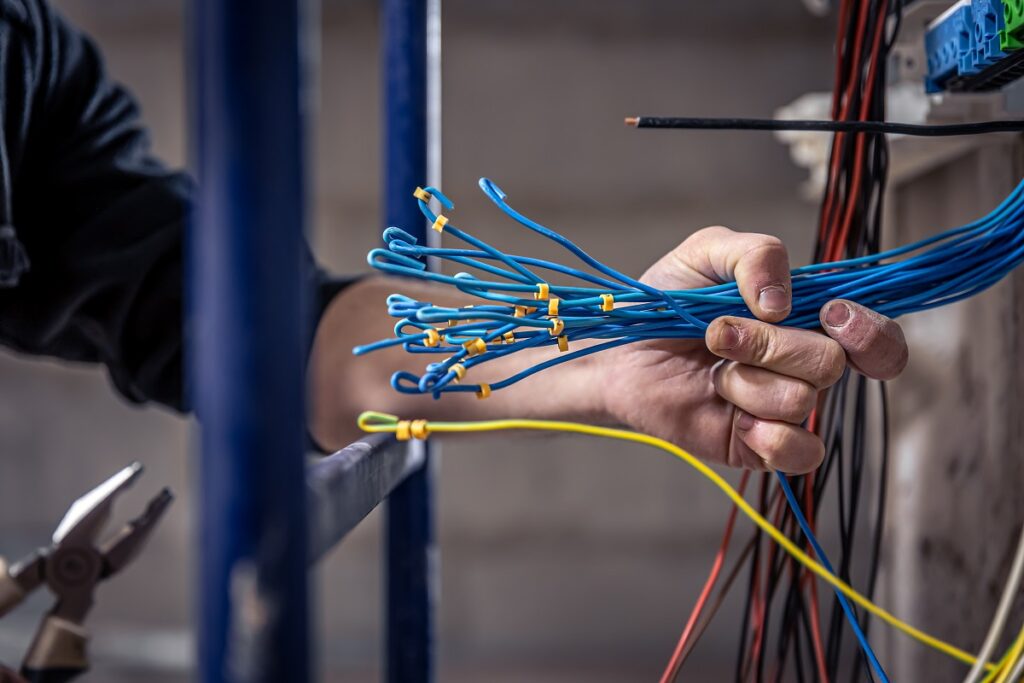Installing electrical cables may seem straightforward, but it requires meticulous attention to safety protocols to prevent hazards. Whether you’re a seasoned electrician or a DIY enthusiast, ensuring safe cable handling and installation practices is paramount. Here’s a comprehensive guide to help you navigate this crucial task.
Understanding the Basics of Electrical Cables
Before delving into installation procedures, it’s vital to grasp the fundamentals of electrical cable. Knowing the types of cable, their specifications, and compatibility with different environments lays a solid foundation for safe installation practices.
Types of Electrical Cable
Explore the various types of electrical cable available, such as twisted pair cable, coaxial cable, and fiber optic cable. Each type has unique characteristics and applications, so understanding their differences is essential for selecting the right cable for your project.
Twisted pair cable, for example, are commonly used for data transmission in networking applications, while coaxial cable are suitable for transmitting high-frequency signals in telecommunications and cable television systems. Fiber optic cable, on the other hand, utilize optical fibers to transmit data over long distances with minimal signal loss.
Cable Specifications and Ratings
Familiarize yourself with cable specifications, including voltage ratings, ampacity, and insulation materials. Adhering to these ratings ensures optimal performance and minimizes the risk of electrical accidents. For instance, using cable with inadequate insulation in high-temperature environments can lead to insulation breakdown and electrical fires.
Preparing for Cable Installation
Proper preparation is key to a successful and safe cable installation process. From gathering the necessary tools to assessing the installation environment, thorough preparation sets the stage for a smooth operation.
Conducting a Site Assessment
Before installation, assess the site for potential hazards such as moisture, heat sources, and physical obstructions. Identify any existing electrical systems or utilities to avoid accidental damage during installation. Additionally, consider factors such as cable routing, accessibility, and environmental conditions to ensure a safe and efficient installation process.
Gathering Essential Tools and Equipment for Cable
Ensure you have the right tools and equipment for cable installation, including cable cutters, strippers, connectors, and insulation testers. Using appropriate tools enhances efficiency and minimizes the likelihood of accidents. Inspect tools regularly for signs of wear or damage, and replace them as needed to maintain safety standards.

Safe Cable Handling Techniques
Handling electrical cable requires caution and precision to prevent damage and ensure longevity. Implementing safe handling techniques minimizes the risk of electrical faults and enhances the reliability of the installation.
Avoiding Cable Strain and Over bending
Handle cable with care to prevent strain and over bending, which can compromise their integrity and lead to electrical failures. Use cable guides and supports to maintain proper alignment and minimize stress on the cable. When routing cable around corners or obstacles, use gentle curves to prevent sharp bends that could damage the cable insulation.
Proper Cable Storage and Transportation
Store and transport cable in a manner that prevents tangling, crushing, or exposure to extreme temperatures. Follow manufacturer guidelines for storage conditions to preserve the quality of the cable. Avoid placing heavy objects on top of cable or storing them near heat sources, as this can cause insulation damage or deformation.

Guidelines for Cable Installation
Effective cable installation requires adherence to industry standards and best practices to ensure reliability and safety. Following established guidelines minimizes the risk of installation errors and electrical hazards.
Maintaining Proper Cable Spacing
Maintain adequate spacing between cable to prevent overheating and interference. Refer to manufacturer specifications and installation guides for recommended spacing requirements. In high-density installations, consider using cable trays or raceways to organize and support cable while maintaining proper spacing.
Securing Cable with Proper Fastening Techniques
Use appropriate fastening techniques such as cable ties, clamps, and straps to secure cable in place. Avoid over-tightening, which can damage the cable or impede their performance. When securing cable to walls or ceilings, use insulated fasteners to prevent damage to the cable insulation and ensure electrical safety.
About Pure CU: Wire and Cable
At Pure CU, we take pride in being a leading provider of fire and heat-resistant wires and cable, ensuring quality, reliability, and innovation since 1984. Based in Karachi, we are dedicated to delivering superior electrical solutions crafted with advanced manufacturing techniques and backed by four decades of expertise. Trust Pure CU to power your needs with products designed for excellence and safety.
Conclusion
Handling and installing electrical cable safely is essential to mitigate the risk of electrical hazards and ensure the reliability of electrical systems. By understanding the basics, preparing diligently, and following established guidelines, you can execute cable installations with confidence and precision. Prioritize safety at every step to create a secure environment for both yourself and others.
With careful planning, proper tools, and adherence to safety protocols, you can safely handle and install electrical cable for various applications. Remember to consult industry standards and manufacturer guidelines for specific requirements and recommendations. By prioritizing safety and quality in your cable installations, you contribute to the overall reliability and longevity of electrical systems

